Agriculture in Israel on:
[Wikipedia]
[Google]
[Amazon]
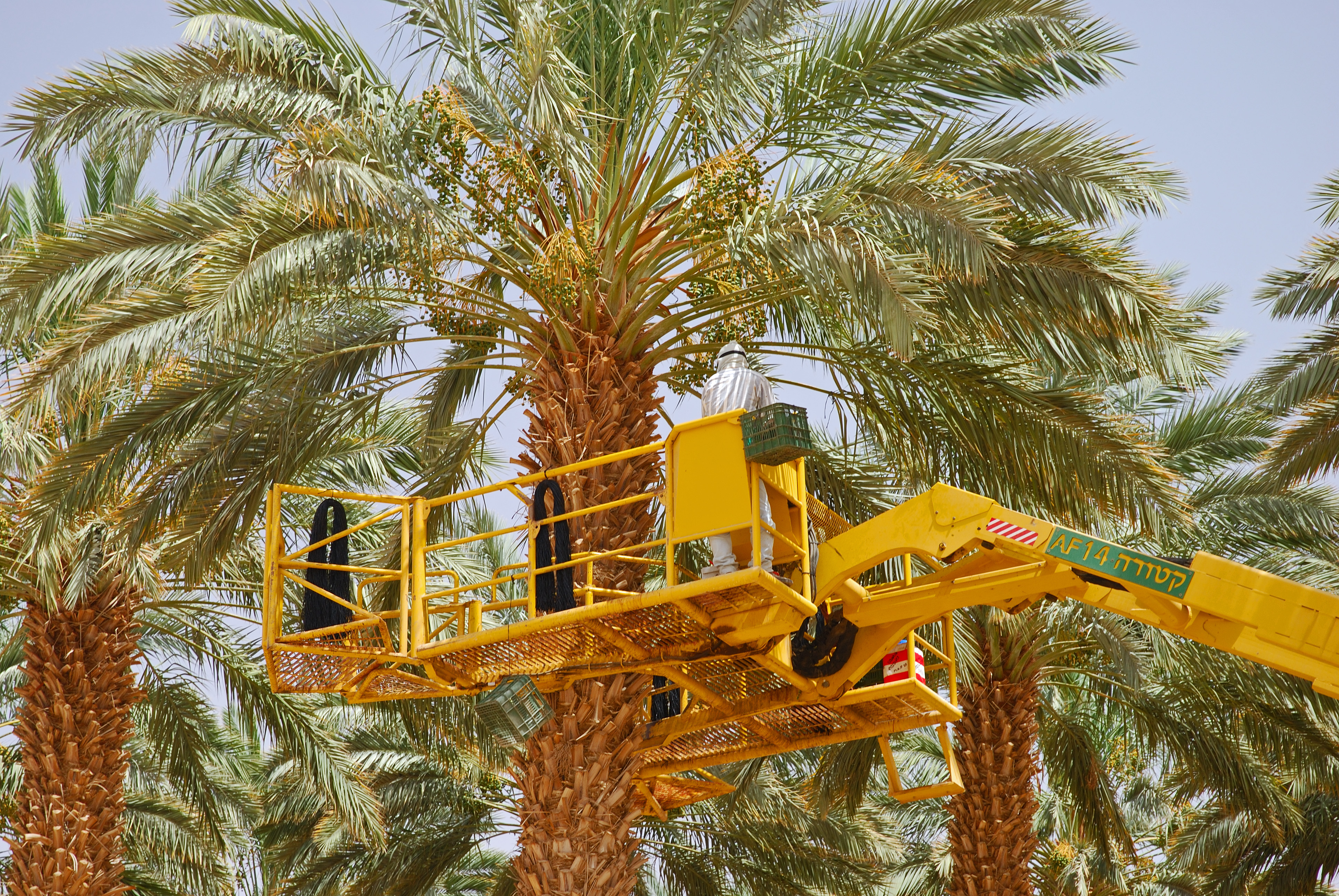
 Agriculture in Israel is a highly developed industry. Israel is a major exporter of fresh produce and a world-leader in agricultural technologies despite the fact that the geography of the country is not naturally conducive to
Agriculture in Israel is a highly developed industry. Israel is a major exporter of fresh produce and a world-leader in agricultural technologies despite the fact that the geography of the country is not naturally conducive to
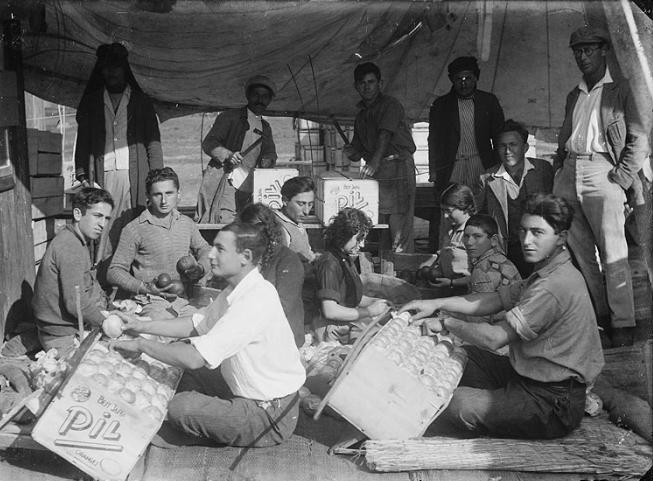 The development of modern agriculture was closely tied to the Zionist movement and Jewish immigration to Palestine in the late nineteenth century. Jews who immigrated purchased land that was mostly semi-arid, although much had been rendered untillable by deforestation, soil erosion and neglect. They set about clearing rocky fields, constructing terraces, draining swampland, reforesting, counteracting soil erosion, and washing salty land. Since independence in 1948, the total area under cultivation has increased from , while the number of agricultural communities has increased from 400 to 725. Agricultural production has expanded 16 times, three times more than population growth.
Water shortage is a major problem. Rain falls between September and April, with an uneven distribution across the country, from in the north to less than in the south. Annual renewable water resources are about , 75% of which is used for agriculture. Most of Israel's freshwater sources have been consequently joined to the
The development of modern agriculture was closely tied to the Zionist movement and Jewish immigration to Palestine in the late nineteenth century. Jews who immigrated purchased land that was mostly semi-arid, although much had been rendered untillable by deforestation, soil erosion and neglect. They set about clearing rocky fields, constructing terraces, draining swampland, reforesting, counteracting soil erosion, and washing salty land. Since independence in 1948, the total area under cultivation has increased from , while the number of agricultural communities has increased from 400 to 725. Agricultural production has expanded 16 times, three times more than population growth.
Water shortage is a major problem. Rain falls between September and April, with an uneven distribution across the country, from in the north to less than in the south. Annual renewable water resources are about , 75% of which is used for agriculture. Most of Israel's freshwater sources have been consequently joined to the
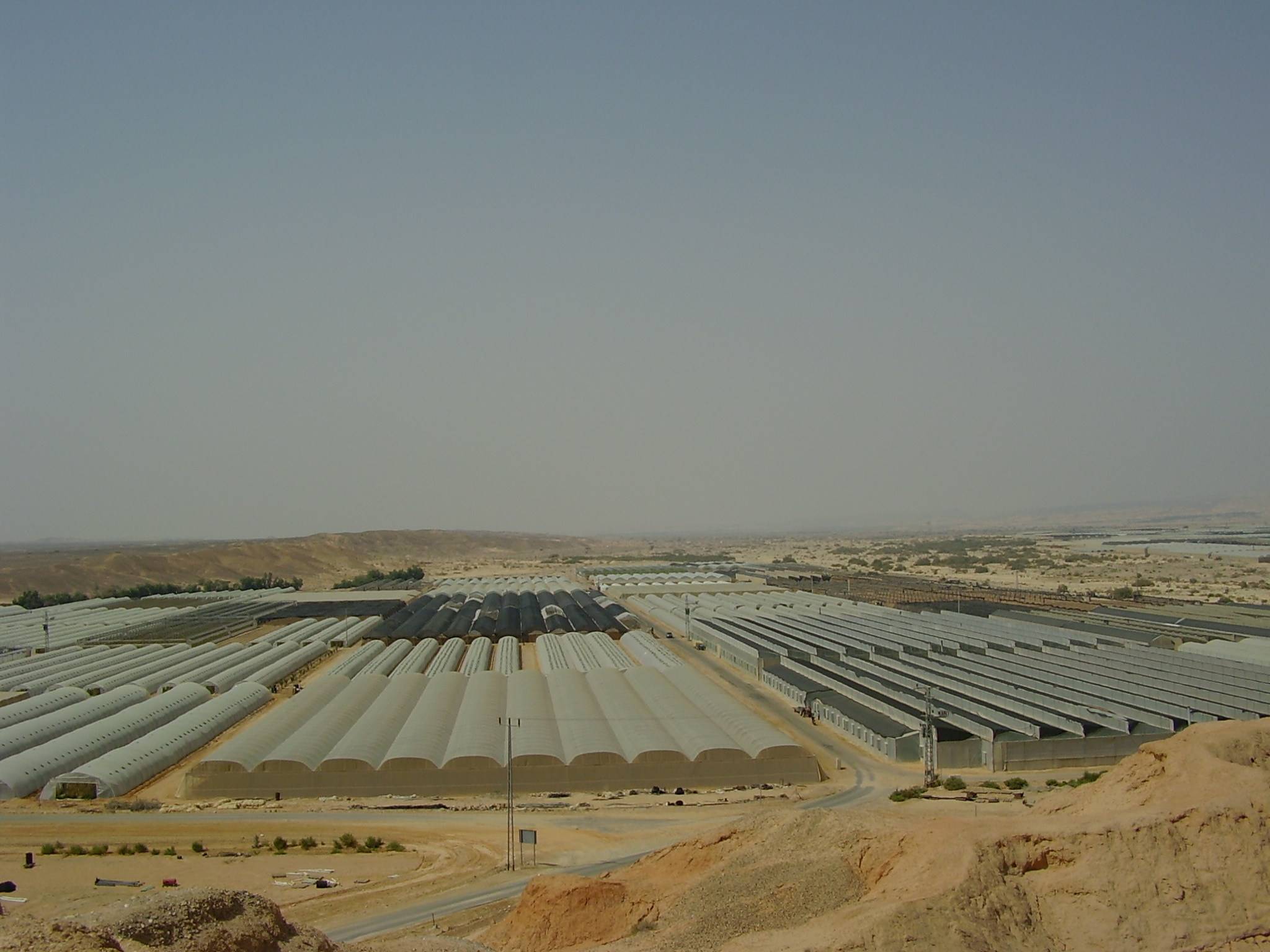 The importance of agriculture in Israel's economy has fallen over time, accounting for decreasing values of GDP. In 1979, it accounted for just under 6% of GDP, 5.1% by 1985, and today, 2.5%.Agriculture in Israel
The importance of agriculture in Israel's economy has fallen over time, accounting for decreasing values of GDP. In 1979, it accounted for just under 6% of GDP, 5.1% by 1985, and today, 2.5%.Agriculture in Israel
In 1995, there were 43,000 farm units with an average size of 13.5 hectares. 19.8% of these were smaller than 1 hectare, 75.7% were 1 to 9 hectares in size, 3.3% were between 10 and 49 hectares, 0.4% were between 50 and 190 hectares, and 0.8% were larger than 200 hectares. Of the 380,000 hectares under cultivation in 1995, 20.8% was under permanent cultivation and 79.2% under rotating cultivation. Farm units included 160,000 hectares used for activities other than cultivation. Cultivation was based mainly in the northern coastal plains, the hills of the interior, and the upper Jordan Valley. In 2006, agricultural output fell by 0.6% following a 3.6% rise in 2005; inputs for 2007 rose by 1.2% excluding wages.Microsoft Word - covers.doc
Between 2004 and 2006, vegetables accounted for around 35% of total agricultural output. Flowers made up around 20%, field crops made up around 18%, fruits (other than citrus), around 15%, and citrus fruits around 10%. In 2006, 36.7% of agricultural output was for domestic consumption, 33.9% for domestic manufacturing, and 22% for direct export. In 2006, 33% of vegetables, 27% of flowers, 16% of field crops, 15.5% of fruits other than citrus, and 9% of citrus fruits were exported. Since 1948, the area of irrigated farmland has increased from . Israeli agricultural production rose 26% between 1999 and 2009, while the number of farmers dropped from 23,500 to 17,000. Farmers have also grown more with less water, using 12% less water to grow 26% more produce. In 2022, Israel's
 Most of Israel's agriculture is based on cooperative principles that evolved in the early twentieth century. Two unique forms of agricultural settlements; the
Most of Israel's agriculture is based on cooperative principles that evolved in the early twentieth century. Two unique forms of agricultural settlements; the
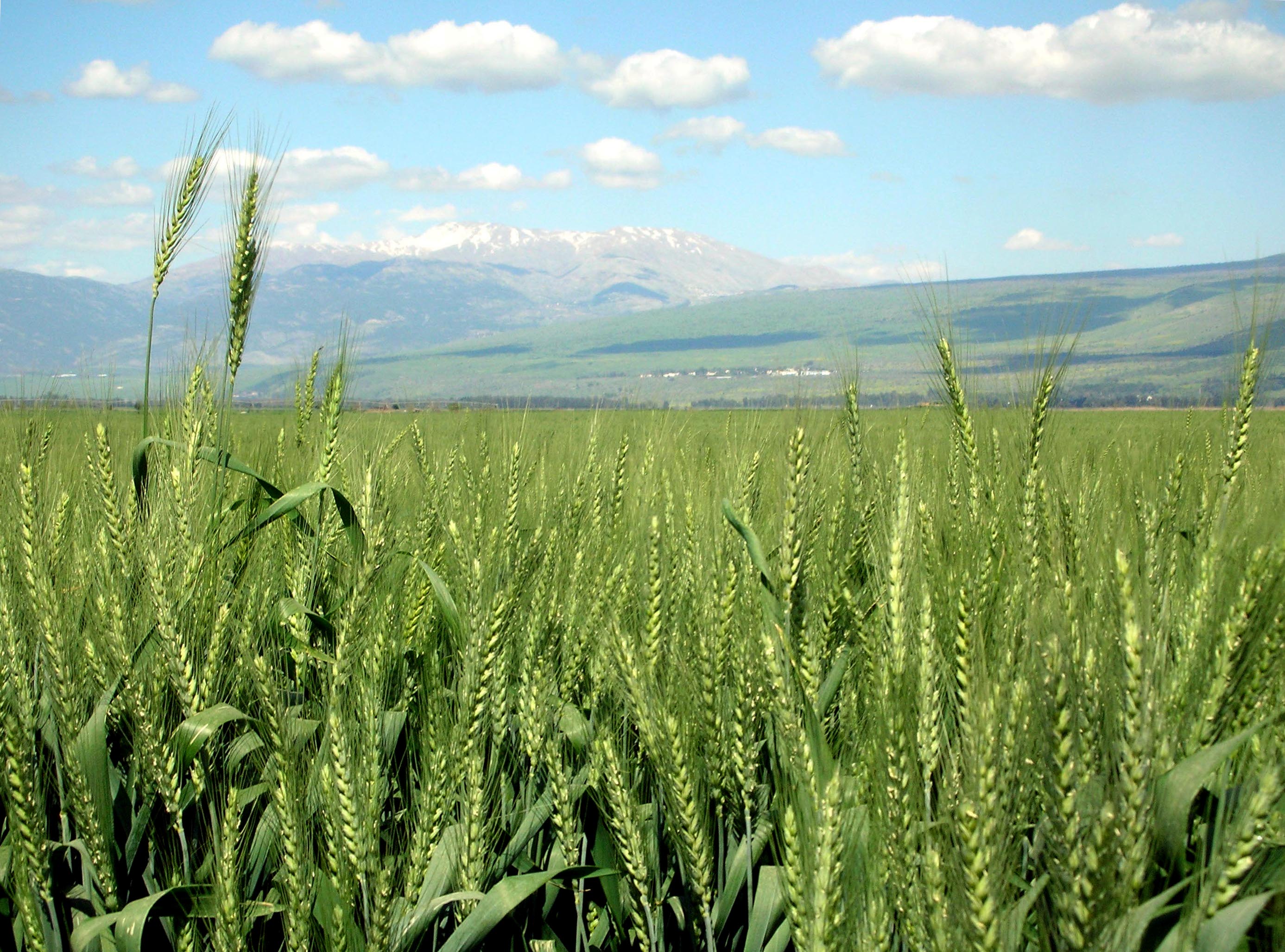
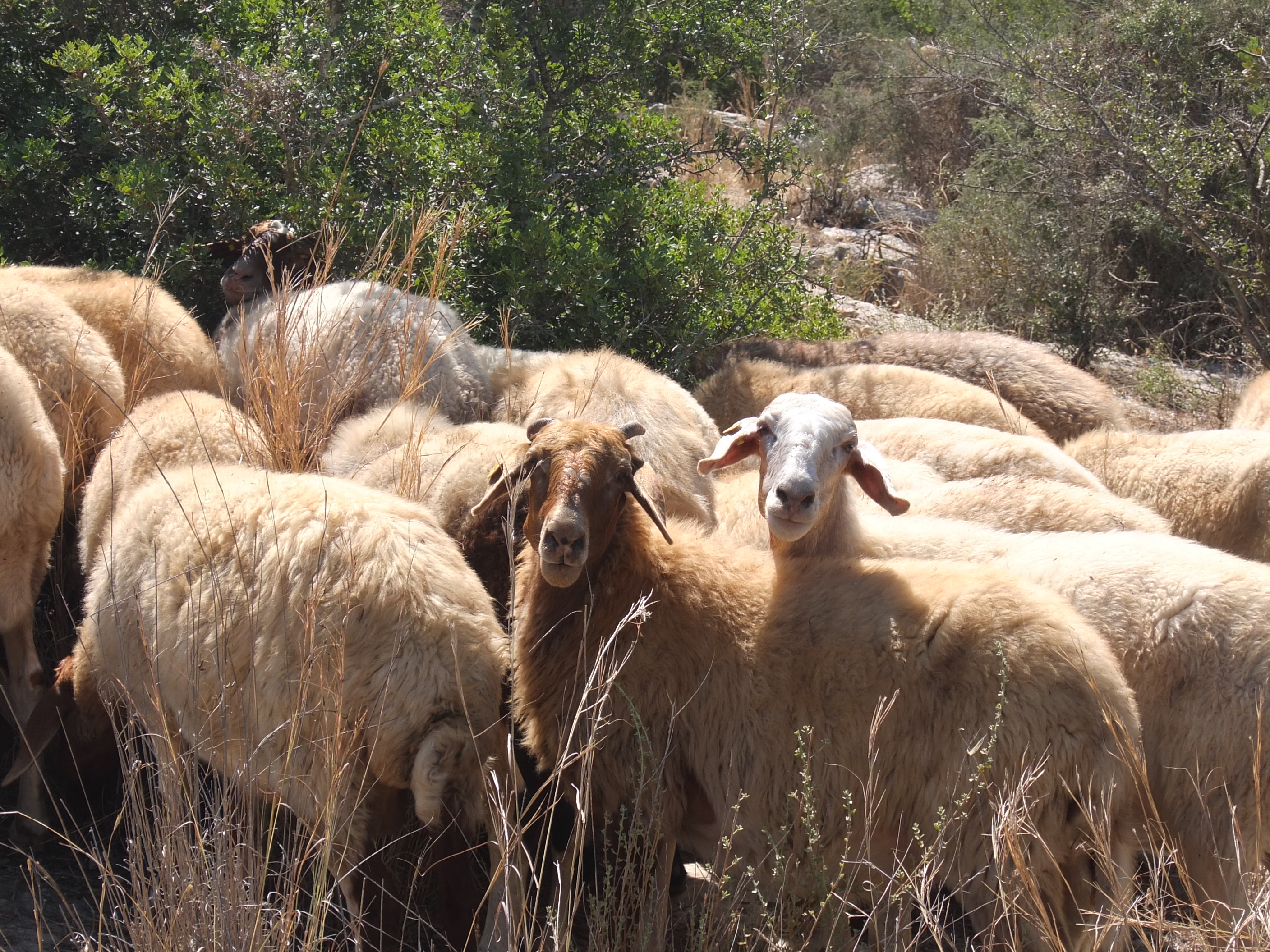 Local cows produce the highest amounts of milk per animal in the world, with an average of 10,208 kilograms (around 10,000 liters) of dairy in 2009, according to data published in 2011 by the Israel Central Bureau of Statistics, outperforming cows in the US ( per cow), Japan (7,497), the European Union (6,139) and Australia (5,601).
A total of 1,304 million liters of milk was produced by Israeli cows in 2010.
All of Israel's
Local cows produce the highest amounts of milk per animal in the world, with an average of 10,208 kilograms (around 10,000 liters) of dairy in 2009, according to data published in 2011 by the Israel Central Bureau of Statistics, outperforming cows in the US ( per cow), Japan (7,497), the European Union (6,139) and Australia (5,601).
A total of 1,304 million liters of milk was produced by Israeli cows in 2010.
All of Israel's
 The
The
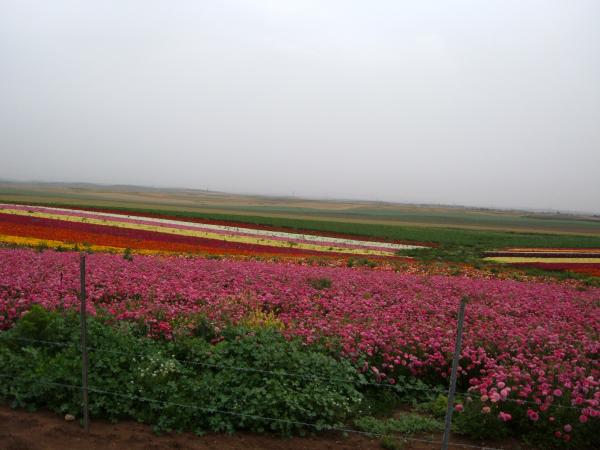 Israel produces vast quantities of flowers for export. Flower exports in 2000 exceeded $50 million. The flowers grown most commonly are '' Chamelaucium'' (waxflower), followed by roses, which are grown on of land. In addition to flowers favored in the West such as lilies, roses, and tulips, Israel exports desert varieties. It has become a major player in the global floral industry, especially as a supplier of traditional European flowers during the winter months. Similar to
Israel produces vast quantities of flowers for export. Flower exports in 2000 exceeded $50 million. The flowers grown most commonly are '' Chamelaucium'' (waxflower), followed by roses, which are grown on of land. In addition to flowers favored in the West such as lilies, roses, and tulips, Israel exports desert varieties. It has become a major player in the global floral industry, especially as a supplier of traditional European flowers during the winter months. Similar to
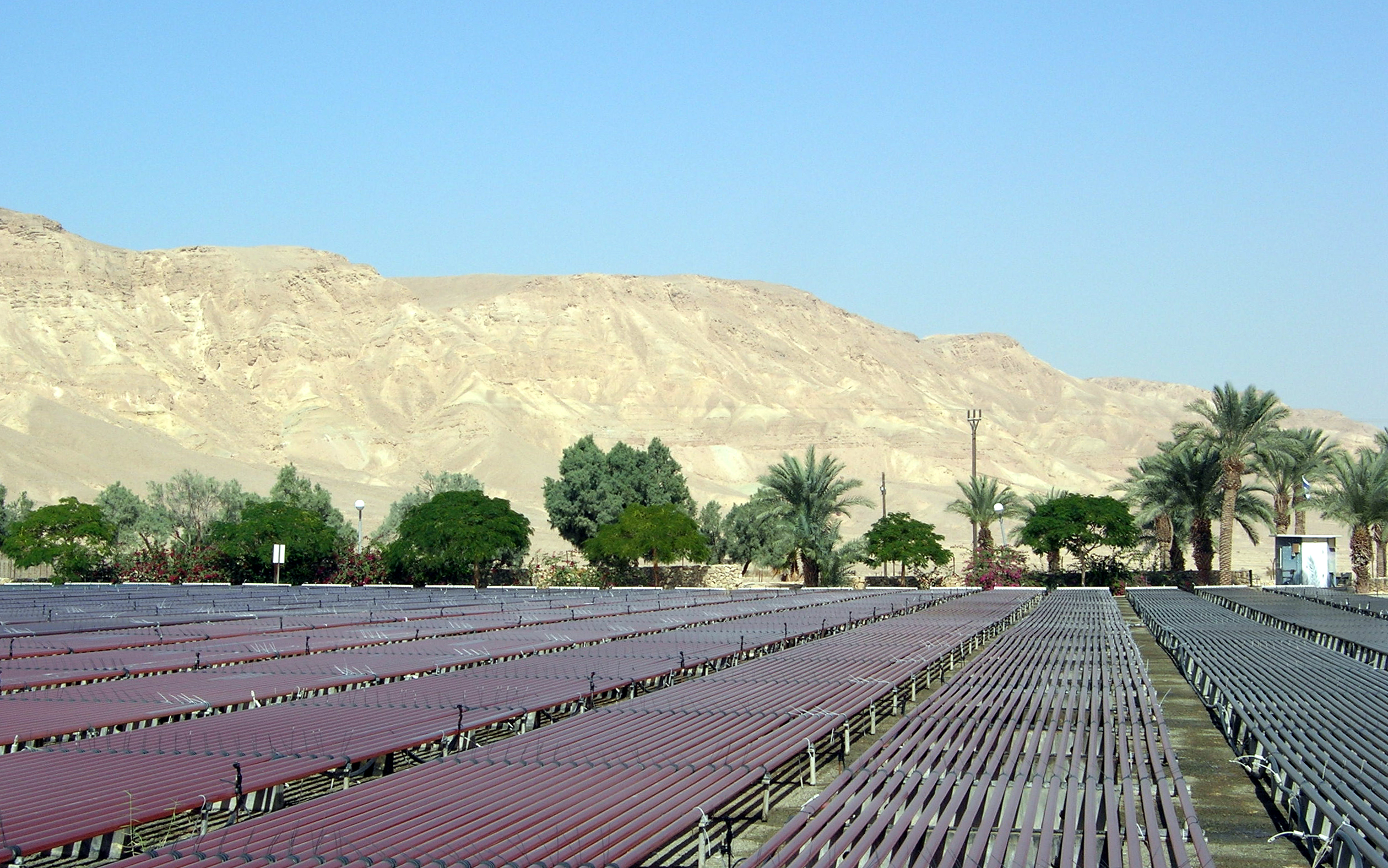 Israel is a world leader in agricultural research and development, which has led to dramatic increases in the quantity and quality of the country's crops. The drive to increase yields and crop quality has led to the development of new seed and plant varieties, as well as to innovations such as a soil conditioner substance (
Israel is a world leader in agricultural research and development, which has led to dramatic increases in the quantity and quality of the country's crops. The drive to increase yields and crop quality has led to the development of new seed and plant varieties, as well as to innovations such as a soil conditioner substance (
File:Israel Agriculture Crop Areas 2017.png, Agricultural crop areas in Israel in 2017
File:Israel Agriculture Crop Types 2017.png, Agricultural crop types in Israel in 2017
Israel plows new ground in exotic crops
Agricultural Crop Areas & Agricultural Crop Types by natural region, 2017
Israel Central Bureau of Statistics {{Asia topic, Agriculture in

 Agriculture in Israel is a highly developed industry. Israel is a major exporter of fresh produce and a world-leader in agricultural technologies despite the fact that the geography of the country is not naturally conducive to
Agriculture in Israel is a highly developed industry. Israel is a major exporter of fresh produce and a world-leader in agricultural technologies despite the fact that the geography of the country is not naturally conducive to agriculture
Agriculture or farming is the practice of cultivating plants and livestock. Agriculture was the key development in the rise of sedentary human civilization, whereby farming of domesticated species created food surpluses that enabled people ...
. More than half of the land area is desert
A desert is a barren area of landscape where little precipitation occurs and, consequently, living conditions are hostile for plant and animal life. The lack of vegetation exposes the unprotected surface of the ground to denudation. About on ...
, and the climate
Climate is the long-term weather pattern in an area, typically averaged over 30 years. More rigorously, it is the mean and variability of meteorological variables over a time spanning from months to millions of years. Some of the meteorologi ...
and lack of water
Water (chemical formula ) is an inorganic, transparent, tasteless, odorless, and nearly colorless chemical substance, which is the main constituent of Earth's hydrosphere and the fluids of all known living organisms (in which it acts as ...
resources do not favor farming. Only 20% of the land area is naturally arable. In 2008 agriculture represented 2.5% of total GDP and 3.6% of exports. While farmworker
A farmworker, farmhand or agricultural worker is someone employed for labor in agriculture. In labor law, the term "farmworker" is sometimes used more narrowly, applying only to a hired worker involved in agricultural production, including harv ...
s made up only 3.7% of the work force, Israel produced 95% of its own food requirements, supplementing this with imports of grain, oilseeds, meat, coffee, cocoa and sugar.
Israel is home to two unique types of agricultural communities, the kibbutz
A kibbutz ( he, קִבּוּץ / , lit. "gathering, clustering"; plural: kibbutzim / ) is an intentional community in Israel that was traditionally based on agriculture. The first kibbutz, established in 1909, was Degania. Today, farming h ...
and moshav
A moshav ( he, מוֹשָׁב, plural ', lit. ''settlement, village'') is a type of Israeli town or settlement, in particular a type of cooperative agricultural community of individual farms pioneered by the Labour Zionists between 1904 ...
, which developed as Jews
Jews ( he, יְהוּדִים, , ) or Jewish people are an ethnoreligious group and nation originating from the Israelites Israelite origins and kingdom: "The first act in the long drama of Jewish history is the age of the Israelites""The ...
from all over the world made aliyah
Aliyah (, ; he, עֲלִיָּה ''ʿălīyyā'', ) is the immigration of Jews from the diaspora to, historically, the geographical Land of Israel, which is in the modern era chiefly represented by the State of Israel. Traditionally descri ...
to the country and embarked on rural settlement
The definition of a rural settlement depends on the country, in some countries, a rural settlement is any settlement in the areas defined as rural by a governmental office, e.g., by the national census bureau. This may include even rural towns. ...
. As of 2016, kibbutzim provided Israel with about 40% of its agricultural produce.
History
 The development of modern agriculture was closely tied to the Zionist movement and Jewish immigration to Palestine in the late nineteenth century. Jews who immigrated purchased land that was mostly semi-arid, although much had been rendered untillable by deforestation, soil erosion and neglect. They set about clearing rocky fields, constructing terraces, draining swampland, reforesting, counteracting soil erosion, and washing salty land. Since independence in 1948, the total area under cultivation has increased from , while the number of agricultural communities has increased from 400 to 725. Agricultural production has expanded 16 times, three times more than population growth.
Water shortage is a major problem. Rain falls between September and April, with an uneven distribution across the country, from in the north to less than in the south. Annual renewable water resources are about , 75% of which is used for agriculture. Most of Israel's freshwater sources have been consequently joined to the
The development of modern agriculture was closely tied to the Zionist movement and Jewish immigration to Palestine in the late nineteenth century. Jews who immigrated purchased land that was mostly semi-arid, although much had been rendered untillable by deforestation, soil erosion and neglect. They set about clearing rocky fields, constructing terraces, draining swampland, reforesting, counteracting soil erosion, and washing salty land. Since independence in 1948, the total area under cultivation has increased from , while the number of agricultural communities has increased from 400 to 725. Agricultural production has expanded 16 times, three times more than population growth.
Water shortage is a major problem. Rain falls between September and April, with an uneven distribution across the country, from in the north to less than in the south. Annual renewable water resources are about , 75% of which is used for agriculture. Most of Israel's freshwater sources have been consequently joined to the National Water Carrier
National Water Carrier of Israel
The National Water Carrier of Israel ( he, המוביל הארצי, ''HaMovil HaArtzi'') is the largest water project in Israel, completed in 1964. Its main purpose is to transfer water from the Sea of Galilee ...
, network of pumping stations, reservoirs, canals and pipelines that transfers water from the north to the south.
Today
 The importance of agriculture in Israel's economy has fallen over time, accounting for decreasing values of GDP. In 1979, it accounted for just under 6% of GDP, 5.1% by 1985, and today, 2.5%.Agriculture in Israel
The importance of agriculture in Israel's economy has fallen over time, accounting for decreasing values of GDP. In 1979, it accounted for just under 6% of GDP, 5.1% by 1985, and today, 2.5%.Agriculture in IsraelIn 1995, there were 43,000 farm units with an average size of 13.5 hectares. 19.8% of these were smaller than 1 hectare, 75.7% were 1 to 9 hectares in size, 3.3% were between 10 and 49 hectares, 0.4% were between 50 and 190 hectares, and 0.8% were larger than 200 hectares. Of the 380,000 hectares under cultivation in 1995, 20.8% was under permanent cultivation and 79.2% under rotating cultivation. Farm units included 160,000 hectares used for activities other than cultivation. Cultivation was based mainly in the northern coastal plains, the hills of the interior, and the upper Jordan Valley. In 2006, agricultural output fell by 0.6% following a 3.6% rise in 2005; inputs for 2007 rose by 1.2% excluding wages.Microsoft Word - covers.doc
Between 2004 and 2006, vegetables accounted for around 35% of total agricultural output. Flowers made up around 20%, field crops made up around 18%, fruits (other than citrus), around 15%, and citrus fruits around 10%. In 2006, 36.7% of agricultural output was for domestic consumption, 33.9% for domestic manufacturing, and 22% for direct export. In 2006, 33% of vegetables, 27% of flowers, 16% of field crops, 15.5% of fruits other than citrus, and 9% of citrus fruits were exported. Since 1948, the area of irrigated farmland has increased from . Israeli agricultural production rose 26% between 1999 and 2009, while the number of farmers dropped from 23,500 to 17,000. Farmers have also grown more with less water, using 12% less water to grow 26% more produce. In 2022, Israel's
Ministry of Agriculture and Rural Development
An agriculture ministry (also called an) agriculture department, agriculture board, agriculture council, or agriculture agency, or ministry of rural development) is a ministry charged with agriculture. The ministry is often headed by a minister ...
announced a plan to increase the total number of agricultural lands cultivated, and to improve the labor force by supporting new farmers and farmers who have not worked in the field for at least seven years with a total of 10 million shekels.
Farm types
kibbutz
A kibbutz ( he, קִבּוּץ / , lit. "gathering, clustering"; plural: kibbutzim / ) is an intentional community in Israel that was traditionally based on agriculture. The first kibbutz, established in 1909, was Degania. Today, farming h ...
, a collective community in which the means of production
The means of production is a term which describes land, labor and capital that can be used to produce products (such as goods or services); however, the term can also refer to anything that is used to produce products. It can also be used as a ...
are communally owned and each member's work benefits all; and the moshav
A moshav ( he, מוֹשָׁב, plural ', lit. ''settlement, village'') is a type of Israeli town or settlement, in particular a type of cooperative agricultural community of individual farms pioneered by the Labour Zionists between 1904 ...
, a farming village where each family maintains its own household and works its own land, while purchasing and marketing are conducted co-operatively. Both communities provided a means not only to realise the dream of the pioneers to have rural communities based on social equality, co-operation and mutual aid but also to gain agricultural output in a productive means. Today, between kibbutzim and moshavim, 76% of the country's fresh produce is output, as well as many processed food products.
Agricultural produce
Crops
Due to the diversity of the land and climate across the country, Israel is able to grow a wide range of crops. Field crops grown in the country includewheat
Wheat is a grass widely cultivated for its seed, a cereal grain that is a worldwide staple food. The many species of wheat together make up the genus ''Triticum'' ; the most widely grown is common wheat (''T. aestivum''). The archaeologi ...
, sorghum
''Sorghum'' () is a genus of about 25 species of flowering plants in the grass family (Poaceae). Some of these species are grown as cereals for human consumption and some in pastures for animals. One species is grown for grain, while many other ...
and corn
Maize ( ; ''Zea mays'' subsp. ''mays'', from es, maíz after tnq, mahiz), also known as corn (North American and Australian English), is a cereal grain first domesticated by indigenous peoples in southern Mexico about 10,000 years ago. The ...
. On 215,000 hectares of land, these sorts of crops are grown, 156,000 hectares of which are winter crops.
Fruit and vegetables grown include citrus
''Citrus'' is a genus of flowering trees and shrubs in the rue family, Rutaceae. Plants in the genus produce citrus fruits, including important crops such as oranges, lemons, grapefruits, pomelos, and limes. The genus ''Citrus'' is native to ...
, avocados, kiwifruit
Kiwifruit (often shortened to kiwi in North American, British and continental European English) or Chinese gooseberry is the edible berry of several species of woody vines in the genus ''Actinidia''. The most common cultivar group of kiwif ...
, guavas and mangoes
A mango is an edible stone fruit produced by the tropical tree ''Mangifera indica''. It is believed to have originated in the region between northwestern Myanmar, Bangladesh, and northeastern India. ''M. indica'' has been cultivated in South ...
, grapes
A grape is a fruit, botanically a berry, of the deciduous woody vines of the flowering plant genus ''Vitis''. Grapes are a non- climacteric type of fruit, generally occurring in clusters.
The cultivation of grapes began perhaps 8,000 years ago, ...
from orchards located on the Mediterranean
The Mediterranean Sea is a sea connected to the Atlantic Ocean, surrounded by the Mediterranean Basin and almost completely enclosed by land: on the north by Western Europe, Western and Southern Europe and Anatolia, on the south by North Africa ...
coastal plain
A coastal plain is flat, low-lying land adjacent to a sea coast. A fall line commonly marks the border between a coastal plain and a piedmont area. Some of the largest coastal plains are in Alaska and the southeastern United States. The Gulf Co ...
. Tomato
The tomato is the edible berry of the plant ''Solanum lycopersicum'', commonly known as the tomato plant. The species originated in western South America, Mexico, and Central America. The Mexican Nahuatl word gave rise to the Spanish word ...
es, cucumbers, peppers
Pepper or peppers may refer to:
Food and spice
* Piperaceae or the pepper family, a large family of flowering plant
** Black pepper
* ''Capsicum'' or pepper, a genus of flowering plants in the nightshade family Solanaceae
** Bell pepper
** Chili ...
and zucchini
The zucchini (; plural: zucchini or zucchinis), courgette (; plural: courgettes) or baby marrow (''Cucurbita pepo'') is a summer squash, a vining herbaceous plant whose fruit are harvested when their immature seeds and epicarp (rind) are st ...
are grown commonly throughout the country; melon
A melon is any of various plants of the family Cucurbitaceae with sweet, edible, and fleshy fruit. The word "melon" can refer to either the plant or specifically to the fruit. Botanically, a melon is a kind of berry, specifically a " pepo". Th ...
s are grown during winter months in the valleys. Subtropical areas in the country produce bananas and dates
Date or dates may refer to:
*Date (fruit), the fruit of the date palm (''Phoenix dactylifera'')
Social activity
*Dating, a form of courtship involving social activity, with the aim of assessing a potential partner
**Group dating
* Play date, a ...
, while in the northern hills apples
An apple is an edible fruit produced by an apple tree (''Malus domestica''). Apple trees are cultivated worldwide and are the most widely grown species in the genus ''Malus''. The tree originated in Central Asia, where its wild ancestor, ' ...
, pear
Pears are fruits produced and consumed around the world, growing on a tree and harvested in the Northern Hemisphere in late summer into October. The pear tree and shrub are a species of genus ''Pyrus'' , in the family Rosaceae, bearing the po ...
s and cherries are grown. Furthermore, grape
A grape is a fruit, botanically a berry, of the deciduous woody vines of the flowering plant genus '' Vitis''. Grapes are a non- climacteric type of fruit, generally occurring in clusters.
The cultivation of grapes began perhaps 8,000 years a ...
vineyards
A vineyard (; also ) is a plantation of grape-bearing vines, grown mainly for winemaking, but also raisins, table grapes and non-alcoholic grape juice. The science, practice and study of vineyard production is known as viticulture. Vineyards ...
are found across the country, as the country's wine industry has developed to become a world-player.
In 1997, $107 million worth of cotton
Cotton is a soft, fluffy staple fiber that grows in a boll, or protective case, around the seeds of the cotton plants of the genus '' Gossypium'' in the mallow family Malvaceae. The fiber is almost pure cellulose, and can contain minor pe ...
was grown in Israel with most of this sold in advance on the futures market. The crop is grown on 28,570 hectares of land, all of which is drip irrigated. 5.5 tons per hectare of raw cotton is averaged for the Acala crop; the Pima crop averages 5 tons per hectare, which are yields among the highest in the world.
Livestock
 Local cows produce the highest amounts of milk per animal in the world, with an average of 10,208 kilograms (around 10,000 liters) of dairy in 2009, according to data published in 2011 by the Israel Central Bureau of Statistics, outperforming cows in the US ( per cow), Japan (7,497), the European Union (6,139) and Australia (5,601).
A total of 1,304 million liters of milk was produced by Israeli cows in 2010.
All of Israel's
Local cows produce the highest amounts of milk per animal in the world, with an average of 10,208 kilograms (around 10,000 liters) of dairy in 2009, according to data published in 2011 by the Israel Central Bureau of Statistics, outperforming cows in the US ( per cow), Japan (7,497), the European Union (6,139) and Australia (5,601).
A total of 1,304 million liters of milk was produced by Israeli cows in 2010.
All of Israel's milk
Milk is a white liquid food produced by the mammary glands of mammals. It is the primary source of nutrition for young mammals (including breastfed human infants) before they are able to digest solid food. Immune factors and immune-modula ...
consumption originates from dairy farms within the country with most herds consisting largely of Israel-Holsteins, a high-yielding, disease-resistant breed. Furthermore, sheep milk
Sheep's milk (or ewes' milk) is the milk of domestic sheep. It is commonly used to make cultured dairy products such as cheese. Some of the most popular sheep cheeses include feta (Greece), ricotta (Italy), and Roquefort (France).
Sheep breed ...
is exported. In terms of poultry, which makes up two thirds of meat consumption, 85% originate from moshavim.
IAPV – Israeli acute paralysis virus
Diseases of the honey bee or abnormal hive conditions include:
Pests and parasites
''Varroa'' mites
''Varroa destructor'' and ''V. jacobsoni'' are parasitic mites that feed on the fat bodies of adult, pupal and larval bees. When the hive ...
– was first discovered here. After recent reports of severe mortality with symptoms similar to acute bee paralysis virus
Diseases of the honey bee or abnormal hive conditions include:
Pests and parasites
''Varroa'' mites
''Varroa destructor'' and ''V. jacobsoni'' are parasitic mites that feed on the fat bodies of adult, pupal and larval bees. When the hive ...
, Maori ''et al.'', 2007 isolated IAPV and published an RNA sequence and several other molecular components. IAPV continues to be significant in apiculture
Beekeeping (or apiculture) is the maintenance of bee colonies, commonly in man-made beehives. Honey bees in the genus '' Apis'' are the most-commonly-kept species but other honey-producing bees such as ''Melipona'' stingless bees are also kept. ...
here and has since been identified in colonies around the world.
Fishing and aquaculture
 The
The Mediterranean Sea
The Mediterranean Sea is a sea connected to the Atlantic Ocean, surrounded by the Mediterranean Basin and almost completely enclosed by land: on the north by Western and Southern Europe and Anatolia, on the south by North Africa, and on the ...
is a source of salt-water fishing; freshwater fishing occurs on Lake Kinneret
The Sea of Galilee ( he, יָם כִּנֶּרֶת, Judeo-Aramaic: יַמּא דטבריא, גִּנֵּיסַר, ar, بحيرة طبريا), also called Lake Tiberias, Kinneret or Kinnereth, is a freshwater lake in Israel. It is the lowest f ...
(the Sea of Galilee). Pioneering technology is being used to breed fish in artificial lakes in the Negev desert. Scientists of the Bengis Center for Desert Aquaculture at Ben-Gurion University of the Negev
Ben-Gurion University of the Negev (BGU) ( he, אוניברסיטת בן-גוריון בנגב, ''Universitat Ben-Guriyon baNegev'') is a public research university in Beersheba, Israel. Ben-Gurion University of the Negev has five campuses: the ...
discovered that the brackish water under the desert can be used for agriculture, aquaculture and a combination of the two. This has led to the farming of fish, shrimp and crustaceans in the Negev.
Commercial fishing
Commercial fishing is the activity of catching fish and other seafood for commercial profit, mostly from wild fisheries. It provides a large quantity of food to many countries around the world, but those who practice it as an industry must often ...
in the eastern Mediterranean has declined significantly due to depletion of fish reserves and the supply of fresh fish in Israel depends almost entirely on aquaculture. Fish from the Sea of Galilee include silver carp
The silver carp (''Hypophthalmichthys molitrix'') is a species of freshwater cyprinid fish, a variety of Asian carp native to China and eastern Siberia, from the Amur River drainage in the north to the Xi Jiang River drainage in the south. Alt ...
, grass carp
The grass carp (''Ctenopharyngodon idella'') is a species of large herbivorous freshwater fish in the family Cyprinidae, native to the Pacific Far East, with a native range stretching from northern Vietnam to the Amur River on the Sino-Russi ...
, grey mullet Grey mullet can mean any of several fish in the family ''Mugilidae'' (the mullets) and having a greyish hue:
* Flathead grey mullet, ''Mugil cephalus''
* Thicklip grey mullet, ''Chelon labrosus''
* Boxlip grey mullet, ''Oedalechilus labeo
The bo ...
, St. Peter's fish
Tilapia ( ) is the common name for nearly a hundred species of cichlid fish from the coelotilapine, coptodonine, heterotilapine, oreochromine, pelmatolapiine, and tilapiine tribes (formerly all were "Tilapiini"), with the economically most ...
, rock bass
The rock bass (''Ambloplites rupestris''), also known as the rock perch, goggle-eye, red eye, and black perch, is a freshwater fish native to east-central North America. This red eyed creature is a species of freshwater fish in the sunfish fa ...
, silver perch, and Asian seabass introduced from Australia. Fish grown in cages submerged in the sea include gilthead seabream (called ''denis'' in Israel), European sea bass
The European bass (''Dicentrarchus labrax'') is a primarily ocean-going fish native to the waters off Europe's western and southern and Africa's northern coasts, though it can also be found in shallow coastal waters and river mouths during the su ...
and a South American variety of meager. Trout
Trout are species of freshwater fish belonging to the genera '' Oncorhynchus'', '' Salmo'' and '' Salvelinus'', all of the subfamily Salmoninae of the family Salmonidae. The word ''trout'' is also used as part of the name of some non-salm ...
and salmon
Salmon () is the common name for several commercially important species of euryhaline ray-finned fish from the family Salmonidae, which are native to tributaries of the North Atlantic (genus ''Salmo'') and North Pacific (genus '' Oncorhy ...
are raised in special canal-like ponds of running water of the Dan River, a tributary of the Jordan River.
Fruit and vegetables
Israel is one of the world's leading fresh citrus producers and exporters, includingoranges
An orange is a fruit of various citrus species in the family Rutaceae (see list of plants known as orange); it primarily refers to ''Citrus'' × ''sinensis'', which is also called sweet orange, to distinguish it from the related ''Citrus × ...
, grapefruit, tangerine
The tangerine is a type of citrus fruit that is orange in color. Its scientific name varies. It has been treated as a separate species under the name ''Citrus tangerina'' or ''Citrus'' × ''tangerina'', or treated as a variety of ''Citrus retic ...
s and a hybrid of a grapefruit and a pomelo
The pomelo ( ), ''Citrus maxima'', is the largest citrus fruit from the family Rutaceae and the principal ancestor of the grapefruit. It is a natural, non-hybrid, citrus fruit, native to Southeast Asia. Similar in taste to a sweet grapefr ...
, developed in Israel.
More than forty types of fruit are grown in Israel. In addition to citrus, these include avocado
The avocado (''Persea americana'') is a medium-sized, evergreen tree in the laurel family ( Lauraceae). It is native to the Americas and was first domesticated by Mesoamerican tribes more than 5,000 years ago. Then as now it was prized for ...
s, bananas, apple
An apple is an edible fruit produced by an apple tree (''Malus domestica''). Apple trees are cultivated worldwide and are the most widely grown species in the genus ''Malus''. The tree originated in Central Asia, where its wild ancestor, ' ...
s, olives, cherries, fig
The fig is the edible fruit of ''Ficus carica'', a species of small tree in the flowering plant family Moraceae. Native to the Mediterranean and western Asia, it has been cultivated since ancient times and is now widely grown throughout the world ...
s, plums, nectarine
The peach (''Prunus persica'') is a deciduous tree first domesticated and cultivated in Zhejiang province of Eastern China. It bears edible juicy fruits with various characteristics, most called peaches and others (the glossy-skinned, non-f ...
s, grape
A grape is a fruit, botanically a berry, of the deciduous woody vines of the flowering plant genus '' Vitis''. Grapes are a non- climacteric type of fruit, generally occurring in clusters.
The cultivation of grapes began perhaps 8,000 years a ...
s, dates
Date or dates may refer to:
*Date (fruit), the fruit of the date palm (''Phoenix dactylifera'')
Social activity
*Dating, a form of courtship involving social activity, with the aim of assessing a potential partner
**Group dating
* Play date, a ...
, strawberries, prickly pear (''tzabbar''), persimmon
The persimmon is the edible fruit of a number of species of trees in the genus '' Diospyros''. The most widely cultivated of these is the Oriental persimmon, ''Diospyros kaki'' ''Diospyros'' is in the family Ebenaceae, and a number of non-per ...
, loquat
The loquat (''Eriobotrya japonica'') is a large evergreen shrub or tree, grown commercially for its orange fruit and for its leaves, which are used to make herbal tea. It is also cultivated as an ornamental plant.
The loquat is in the family R ...
and pomegranate
The pomegranate (''Punica granatum'') is a fruit-bearing deciduous shrub in the family Lythraceae, subfamily Punicoideae, that grows between tall.
The pomegranate was originally described throughout the Mediterranean Basin, Mediterranean re ...
s. Israel is the second leading producer of loquat
The loquat (''Eriobotrya japonica'') is a large evergreen shrub or tree, grown commercially for its orange fruit and for its leaves, which are used to make herbal tea. It is also cultivated as an ornamental plant.
The loquat is in the family R ...
after Japan. Almond is also grown.
In 1973, two Israeli scientists, Haim Rabinowitch and Nachum Kedar, developed a variety of tomato
The tomato is the edible berry of the plant ''Solanum lycopersicum'', commonly known as the tomato plant. The species originated in western South America, Mexico, and Central America. The Mexican Nahuatl word gave rise to the Spanish word ...
with slower ripening than ordinary tomatoes in a hot climate. Their research led to the development of the world's first long shelf-life commercial tomato varieties. This discovery transformed agricultural economics in Israel, promoting the export of the vegetables seeds and the move to high-tech farming. It also had a global impact, enabling large-scale production through the prevention of spoilage. Previously, farmers were forced to discard 40 percent of their produce.
The '' Tomaccio'' tomato was developed by Hishtil Nurseries, which conducted a 12-year breeding program using wild Peruvian tomato species to create a sweet snack tomato.
Flowers
floriculture
Floriculture, or flower farming, is a branch of horticulture concerned with the cultivation of flowering and ornamental plants for gardens and for floristry, comprising the floral industry. The development of new varieties by plant breeding is ...
around the world, Israel's flower cultivation relies heavily on introduced species
An introduced species, alien species, exotic species, adventive species, immigrant species, foreign species, non-indigenous species, or non-native species is a species living outside its native distributional range, but which has arrived ther ...
. Editor: JJ. Editorial Board: MCD, IM, ES. Here these especially include ''Ornithogalum dubium
''Ornithogalum dubium'', common names sun star, star of Bethlehem or yellow chincherinchee, is a species of flowering plant in the family Asparagaceae, subfamily Scilloideae. It is a South African (Cape Province) endemic.
The Latin specific epi ...
'', '' Leucojum aestivum'' and '' Paeonia''.
Research and technology
vermiculite
Vermiculite is a hydrous phyllosilicate mineral which undergoes significant expansion when heated. Exfoliation occurs when the mineral is heated sufficiently, and commercial furnaces can routinely produce this effect. Vermiculite forms by the we ...
) which, when mixed with local soils, boosts crop yields, and drip irrigation
Drip irrigation or trickle irrigation is a type of micro-irrigation system that has the potential to save water and nutrients by allowing water to drip slowly to the roots of plants, either from above the soil surface or buried below the surface. ...
.
A very accomplished and well regarded agricultural geneticist
A geneticist is a biologist or physician who studies genetics, the science of genes, heredity, and variation of organisms. A geneticist can be employed as a scientist or a lecturer. Geneticists may perform general research on genetic processes ...
in the country is Morris Soller
Morris Soller (1931) is a research professor in the Department of Genetics of the Hebrew University of Jerusalem. He is especially interested in livestock- and crop- genetics including trypanotolerance in cattle.
Early life and education
Solle ...
. Soller is mostly known for livestock genetics and crop genetics.
The Agritech Exhibition
The Agritech Exhibition, held once every three years, is one of the leading international events of its kind to showcase Israel and international agriculture technologies. It traditionally attracts many Ministers of Agriculture, decision-makers, experts, practitioners and trainers in agriculture, and thousands of visitors. It provides an opportunity to see at one site the latest developments in agricultural sector and advanced agro-technologies, especially in the fields of irrigation, water management, arid zone agriculture, intensive greenhouse cultivation, development of new seed varieties, and organic and ecologically-oriented agriculture. At the Agritech Exhibition in 2012 there were more than 35,000 visitors, and more than 250 exhibitors.Organic farming
Organic produce makes up 1.5% of Israeli agricultural output, but it accounts for 13% of agricultural exports. Israel has of organic fields: Vegetable crops grown in open fields account for 65% of the land use, fruit orchards – 25%, hothouse vegetables – 6% and herbs – 4%.Government regulation
Farm surpluses have been almost eradicated in the country, with farms having production and water quotas for each crop, which have stabilised prices.Production quota
A production quota is a goal for the production of a good. It is typically set by a government or an organization, and can be applied to an individual worker, firm, industry or country. Quotas can be set high to encourage production, or can be u ...
s apply to milk, eggs, poultry and potatoes. Israel's government also encourages a reduction in agricultural costs by trying to encourage specialised farming, and halting of production of crops for which no sufficiently profitable markets exist. The Ministry of Agriculture
An agriculture ministry (also called an) agriculture department, agriculture board, agriculture council, or agriculture agency, or ministry of rural development) is a ministry charged with agriculture. The ministry is often headed by a minister ...
oversees the country's agricultural sector, including maintenance of standards of plant and animal health, agricultural planning, and research and marketing.
Disease
A survey conducted across 20172018 made the first detection of ''Xylella fastidiosa'' in the country. This was found on almond in theHula Valley
The Hula Valley ( he, עמק החולה, translit. ''Emek Ha-Ḥula''; also transliterated as Huleh Valley, ar, سهل الحولة) is an agricultural region in northern Israel with abundant fresh water, which used to be Lake Hula, prior to ...
, which is in the northeast. Polymerase chain reaction
The polymerase chain reaction (PCR) is a method widely used to rapidly make millions to billions of copies (complete or partial) of a specific DNA sample, allowing scientists to take a very small sample of DNA and amplify it (or a part of it) ...
(PCR) identified it as the ''Xylella fastidiosa'' subsp. ''fastidiosa'' (''Xff'') subspecies.
Maps
See also
*Agricultural Union
The Agricultural Union ( he, האיחוד החקלאי, ''HaIhud HaHakla'i'') is a settlement movement in Israel for agricultural villages, which includes several moshavim and community settlement. It also has a youth movement founded in 1978.
Me ...
* Agrexco
* Agricultural Research Organization, Volcani Center
The Agricultural Research Organization, Volcani Center ( he, מנהל המחקר החקלאי - מרכז וולקני), previously known as the Agricultural Research Station of the Jewish Agency for Palestine, is an Israeli agricultural research c ...
* Economy of Israel
References
External links
Israel plows new ground in exotic crops
Agricultural Crop Areas & Agricultural Crop Types by natural region, 2017
Israel Central Bureau of Statistics {{Asia topic, Agriculture in